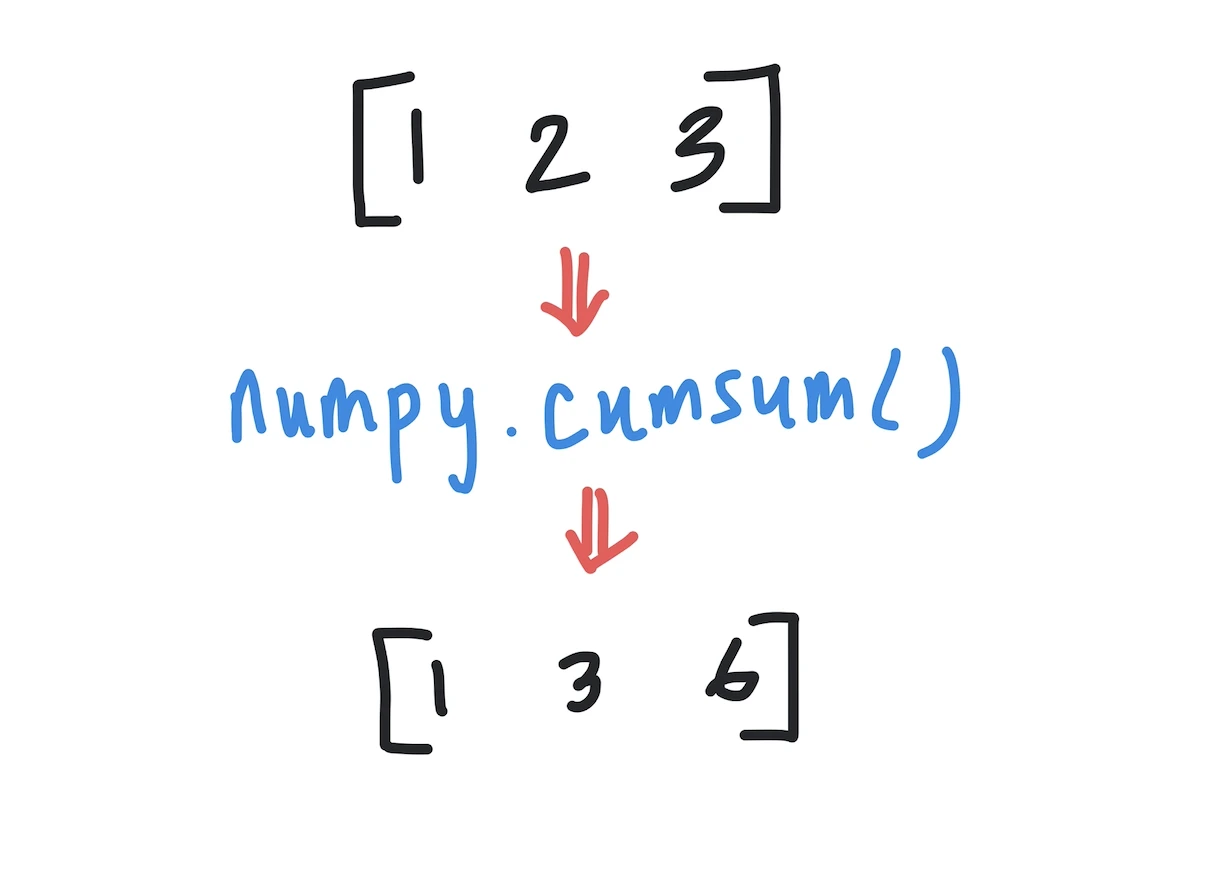Kodeclik Blog
Python numpy.cumsum()
Numpy is a popular Python library used for scientific computing and data analysis. It provides powerful tools for working with arrays, matrices, and vectors. One such tool is the numpy.cumsum() function, which can be used to compute the cumulative sum of elements in an array. In this blog post, we will explore how to use the numpy.cumsum() function.
Consider the following piece of code:
import numpy as np
# Create a numpy array
arr = np.array([1, 2, 3])
# Compute the cumulative sum
cum_arr = np.cumsum(arr)
print(cum_arr)The output is:
[1 3 6]This is because 1 is the cumulative sum of elements till the first element (which is just 1), 3 is the cumulative sum of elements till the second element (i.e., 1+2=3), and 6 is the cumulative sum till the third element (i.e., 1+2+3=6).
You can also use cumsum() with multidimensional arrays but you must specify the axis along which the sum needs to be computed. But first let us see what happens when we give a two-dimensional array without any additional arguments:
import numpy as np
# Create a numpy array
arr = np.array([[1, 2], [3, 4]])
# Compute the cumulative sum
cum_arr = np.cumsum(arr)
print(cum_arr)The output is:
[ 1 3 6 10]In other words, what numpy.cumsum() has done is to flatten the 2D array into a 1D array and then it has computed the cumulative sum on it, yielding the array [1 3 6 10].
If we specify axis=0, like so:
import numpy as np
# Create a numpy array
arr = np.array([[1, 2], [3, 4]])
# Compute the cumulative sum
cum_arr = np.cumsum(arr, axis=0)
print(cum_arr)we get:
[[1 2]
[4 6]]Here we are performing cumulative sums along rows. Thus the first row stays the same and the second row is modified. Note that 4 = 1+3 and 6 = 2+4. If we used axis=1 we will obtain cumulative sums along the other axis. Thus:
import numpy as np
# Create a numpy array
arr = np.array([[1, 2], [3, 4]])
# Compute the cumulative sum
cum_arr = np.cumsum(arr, axis=1)
print(cum_arr)yields:
[[1 3]
[3 7]]Here note that the first column stays the same. The second column (and additional columns, if they were present) will contain the cumulative sums.
If you liked learning about numpy.cumsum(), learn about Python’s numpy.repeat() function!
Interested in more things Python? Checkout our post on Python queues. Also see our blogpost on Python's enumerate() capability. Also if you like Python+math content, see our blogpost on Magic Squares. Finally, master the Python print function!
Want to learn Python with us? Sign up for 1:1 or small group classes.
